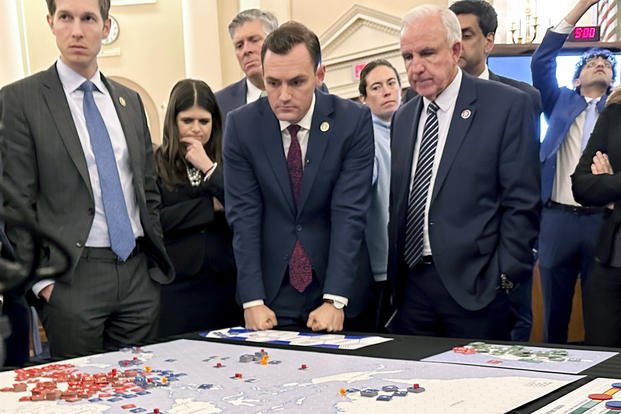The rise of commercially viable generative artificial intelligence (AI) has the potential to transform a vast range of sectors. This transformation will be particularly profound in contemporary military education.
Generative AI will fundamentally reshape war gaming — analytical games that simulate aspects of warfare at tactical, operational or strategic levels — by allowing senior military and political leaders to pursue better tactical solutions to unexpected crises, solve more complex logistical and operational challenges and deepen their strategic thinking.
The art of war gaming
From its inception, war gaming has been intended to offer realistic training to commanders that could otherwise only be gained through real-world experience.
Initially instituted by Prussian staff officers in the early 1800s and involving highly detailed scale models and complex charts to calculate casualties, war games often serve as educational exercises intended to allow commanders to gain experience against a live adversary.
By forcing commanders to adapt to an opponent’s tactics and rely on their own intuition to confront unexpected situations, war games are an attempt to mirror the human experience of combat.
War gaming also offers a way to test operational plans, allowing leaders to gain experience planning large-scale operations and work through complex logistical challenges.
By allowing vast distances to be visualized on a single board, operational war games allow for doctrines to be tested at scales impossible to replicate for most professional military forces.
From Japan’s strikes on Midway, which were practised and planned primarily using war games, to NATO’s long-running naval war-game series, such exercises are often a critical part of operational planning.
Lastly, war games provide the foundation for a common strategic culture within a country’s military and national security institutions. Because these exercises are often reflections of the most likely crises faced by senior military and political leaders, war games offer the opportunity for officers to share their perspectives.

Generative AI
AI is already being employed in active conflict situations, including by Israel in Gaza. The rise of generative AI is also poised to profoundly transform the practice of war gaming as an exercise to train human commanders, perfect operational plans and doctrines and develop stronger strategic cultures.
As with other strategy games like chess, Risk and Go, generative AI will be capable of challenging commanders’ handling of battlefield tactics.
Rather than relying on human intuition, AI commanders will be able to model an adversary’s tactics almost flawlessly, allowing opposing officers to train against a range of contemporary forces at nearly no cost.
Given that AI systems have become increasingly customizable, commanders will also be able to train against facsimiles of themselves, helping them overcome their own weaknesses.
This process may even eventually extend to human-machine interactions. Advances in AI could allow military leaders to gain additional competencies in handling sophisticated military AI and receive tactical advice from a broader range of perspectives.
Along with training commanders to confront the battlefields of the future, AI-enhanced war games may also spur significant improvements in operational planning. Borrowing from commercial industries, AI may be capable of directing equipment and personnel to support specific campaign objectives while optimizing for flexibility to respond to unexpected threats.
Given its vast computing power, AI war games will also allow professional military planners to test their assumptions against a near endless range of possible contingencies, strengthening internal decision-making processes and fine-tuning pre-existing models.
Lastly, generative AI will allow war games to incorporate more strategy, providing invaluable insights and experience to both military and political leaders.
Preparing for uncertainty
In generating a broader range of underlying scenarios to guide game play, AI will also allow participants to consider a multitude of possible developments, each branching out into near-limitless possibilities.
This will allow participants to adapt to changes in each player’s strategic calculations, including alliance structure, economic considerations, political developments and societal trends, all of which exert pressures on real-world military strategy.
AI’s capacity to introduce new developments into game play, including through its faulty assumptions, will force commanders to prepare for uncertainty and the “fog of war,” an increasingly necessary skill in the complex environment of contemporary combat.
AI-enhanced strategic war games will also increase the likelihood of senior leaders being forced to contend with doubts regarding their own strategic doctrines, contributing to deeper discussions within their respective organizations.
Military science revolution
The use of war gaming as a tactical, operational and strategic exercise has been a hallmark of advanced militaries since the First World War and has allowed political and military leaders to carry out wars that possess complexities that were unimaginable only a generation ago.
The rise of generative AI and its contribution to war gaming will likely prompt yet another revolution in the field of military science. These games will improve the realism of training exercises and prepare leaders for the future of conflict, solve complex logistical challenges and spark new innovations in overarching military strategy.
As contemporary combat grows ever more chaotic and complex, properly teaching the art of war has become even more crucial.
John Long Burnham is Senior Policy Research Analyst, Defence, University of Alberta
This article is republished from The Conversation under a Creative Commons license. Read the original article.
© Copyright 2024 The Conversation. All rights reserved. This material may not be published, broadcast, rewritten or redistributed.









